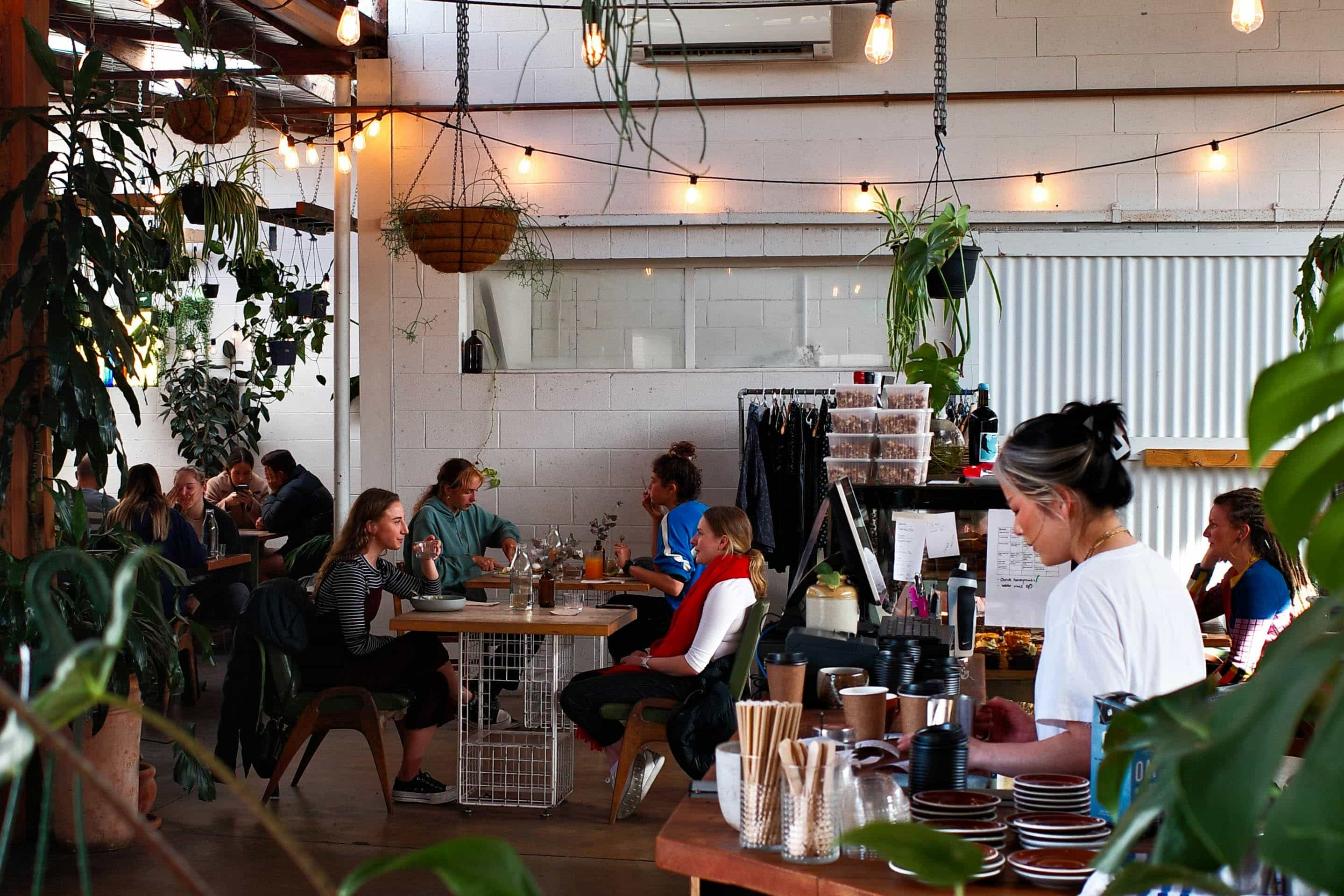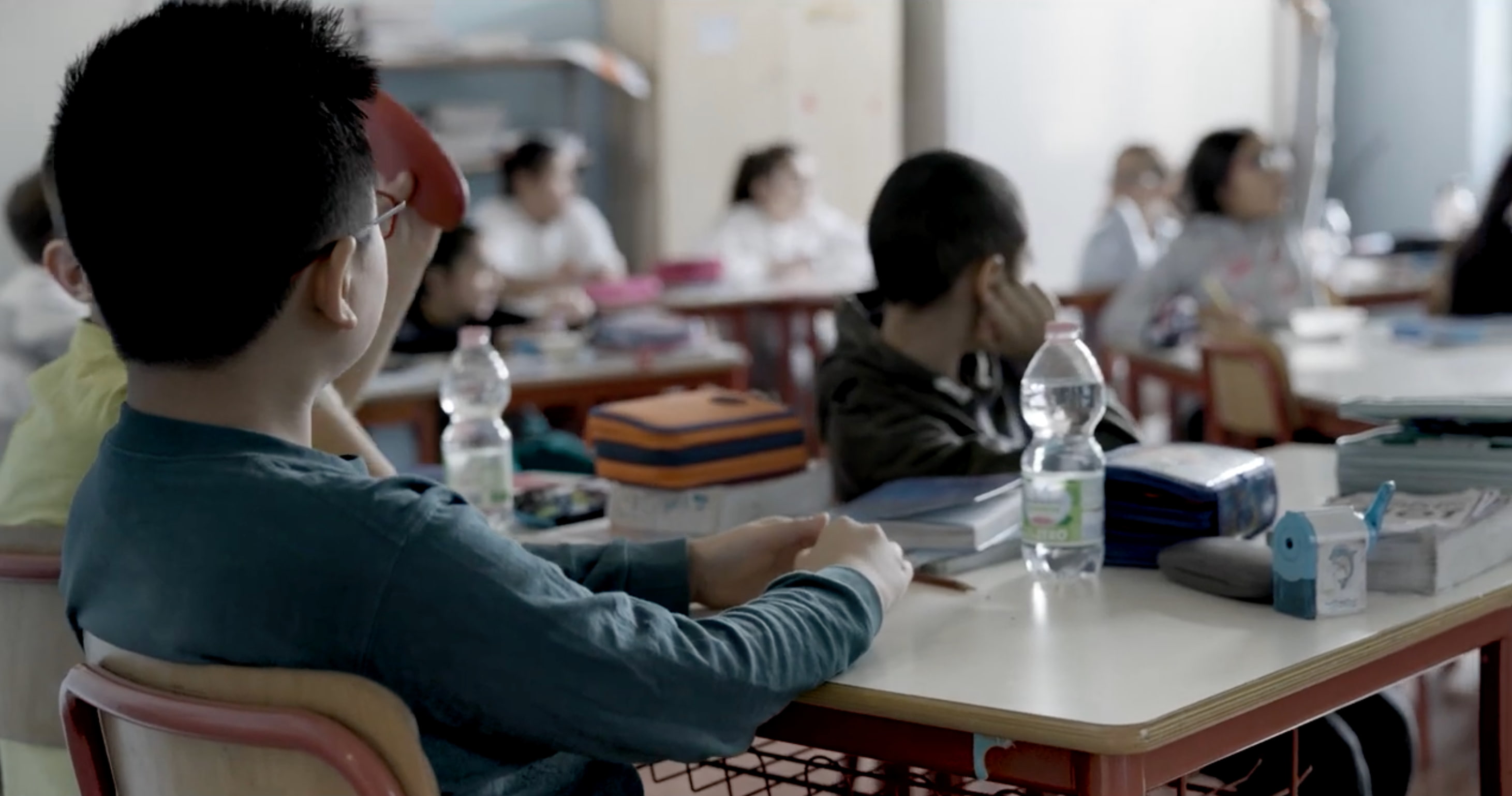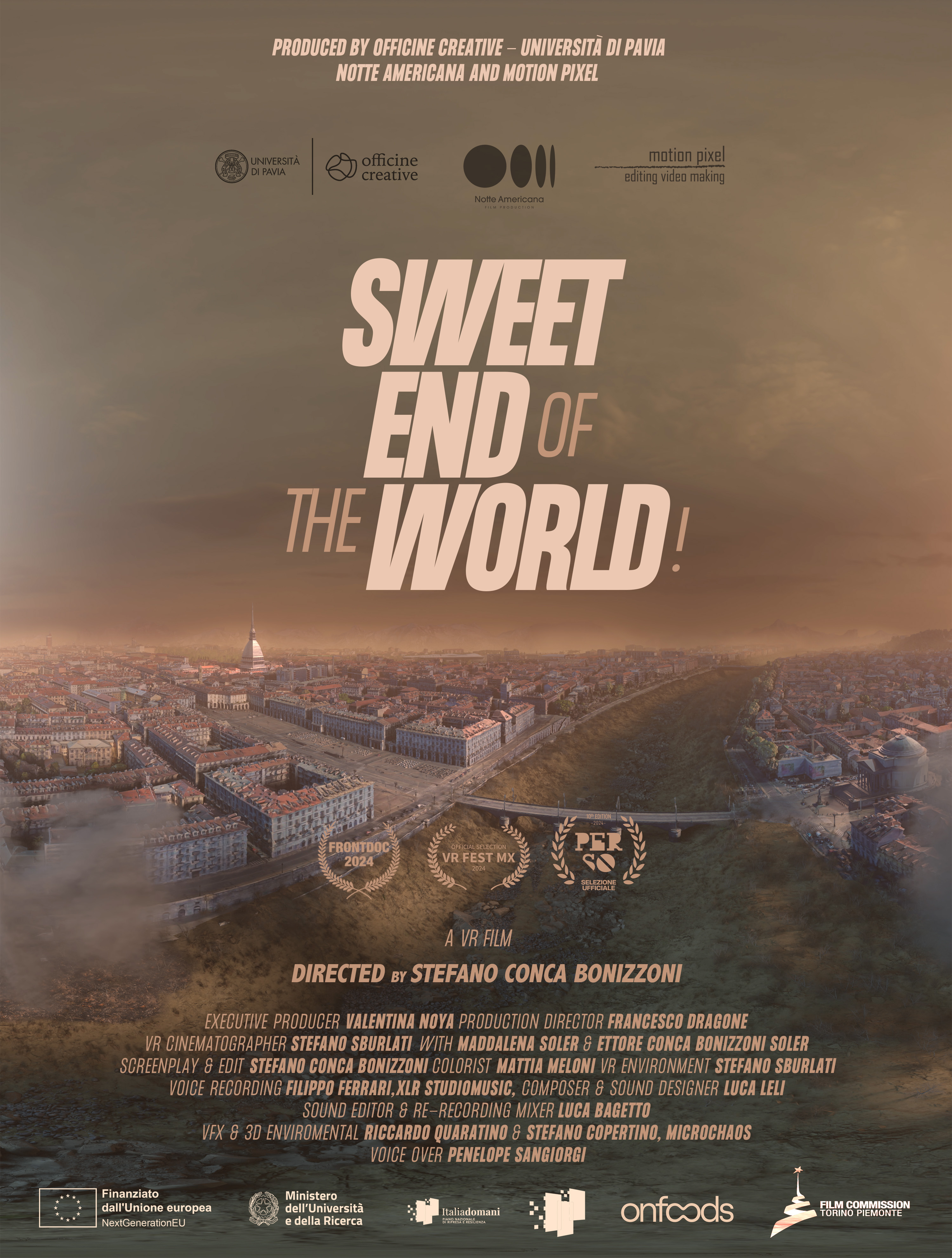Funded under the National Recovery and Resilience Plan (NRRP), Mission 4 Component 2 Investment 1.3, Theme 10.
For the new agri-food policies, we must start from the needs of communities, institutions, and businesses. An interview with prof. Vittuari
Matteo Vittuari, agricultural and food economist and coordinator of Spoke 7 in the OnFoods project, discusses the interdisciplinary work required—and currently underway—to promote innovative and inclusive food policies.


Isabella Ceccarini
Giulio Burroni
As part of the PNRR OnFoods project, Matteo Vittuari leads a research group bringing together experts from over twenty disciplines, ranging from agricultural economics to psychology, to address the challenges of food sustainability.
In this interview, Vittuari outlines the complexities and benefits of an interdisciplinary approach, the dialogue with national and international policies, and initiatives aimed at reducing food waste and promoting healthy, accessible diets. It is a journey that goes beyond academic boundaries, engaging communities, institutions, and businesses.
🟢 Professor Vittuari, you coordinate the working group within the PNRR OnFoods project that focuses on food policies, behaviors, and education—a group that includes nine partners among universities, research institutes, and companies in the agri-food sector. What national and international policy frameworks inspire your research actions?
Starting with the national context, the PNRR is undoubtedly the framework that has made it possible to undertake such an ambitious project and bring together the network of researchers driving our activities. Additionally, national policies on food, agriculture, sustainability, and—due to my professional focus—food waste play a key role. The 2016 Gadda Law, aimed at reducing food waste by facilitating the donation of surplus food, remains a critical reference point in Italy and an important source of international inspiration.
This is not an isolated case. We can say that, on a global scale, Italy serves as a significant reference point and plays an extremely active role, as demonstrated by the Food Systems Summit and the projects launched in Africa under the Mattei Plan.
At the European level, transforming food systems is closely tied to the Green Deal and the ambitions of the new von der Leyen Commission, which took office on December 1 and is expected to present its new vision for agriculture and food within its first 100 days. The key challenges are unlikely to change: sustainability, combating climate change, social inclusion, and innovation should be accompanied by a renewed focus on competitiveness.
On a global scale, the main reference point for those working in these areas is the United Nations’ 2030 Agenda for Sustainable Development Goals (SDGs). However, we also consider the numerous events on the global agenda that directly or indirectly involve agriculture and food. Over the past year alone, these include COP29 on climate change in Baku, COP16 on biodiversity in Cali, and the G7 Agriculture meeting in Syracuse.
From a political perspective, there are thus multiple sources of inspiration, guidelines, and regulatory frameworks at the national and European levels. Internationally, we are witnessing a broad ambition to promote the transition toward more equitable and sustainable food systems.
"We often talk about interdisciplinarity, but putting it into practice is challenging: it requires patience, a willingness to listen to others, and the ability to move beyond a strictly disciplinary perspective to embrace different viewpoints, which can also transform our scientific and professional outlooks".

🟢 The goals of the 2030 Agenda are all interconnected, embracing a holistic approach. Similarly, Spoke 7 adopts an interdisciplinary perspective within its area of expertise. Which disciplines are involved in Spoke 7, and what projects are they focusing on?
I believe that interdisciplinarity is one of the core values of the OnFoods project as a whole and, in particular, of the working group within Spoke 7. We have an extensive network of researchers from very diverse disciplines who, at first glance, speak seemingly different "languages." One of the most stimulating aspects is precisely the attempt to find a common denominator among these languages—a process that, in itself, is a fascinating experiment.
We often talk about interdisciplinarity, but putting it into practice is challenging: it requires patience, a willingness to listen to others, and the ability to move beyond a strictly disciplinary perspective to embrace different viewpoints, which can also transform our scientific and professional outlooks.
In Spoke 7, more than twenty disciplinary fields are represented, including pharmacology, nutrition, anthropology, psychology, economics, agricultural economics, art history, pedagogy, law, statistics, and computer science, to name just a few. And I am certain I haven’t listed all the disciplines involved.
Some projects are more specific, while others are genuinely interdisciplinary. One example is a project on university catering (PARCA), involving groups from the University of Parma and the University of Bologna. This initiative aims to study students’ eating habits in university canteens, seeking to understand the motivations behind their choices. The challenge for university canteens lies in offering proposals that are clearly oriented toward sustainability, health, and inclusion, while also maintaining quality—because eating should, above all, be a pleasure.
This research integrates psychology, nutritional sciences, and behavioral economics, bringing together a team of over ten researchers who have shared different tools to investigate eating habits, determinants of choice, and aspects related to nutrition and the psychological well-being associated with food.
In the field of collective catering, it is also crucial to analyze the roles of the various stakeholders involved—not just the students who use the canteens but also the operators, school administrators, municipalities, and families. For instance, the research on university catering would not have been possible without the collaboration of ER.GO, the Regional Agency for the Right to Higher Education of Emilia-Romagna, which provided contacts and expertise. Food education is a collective effort.
Expanding on the activities related to PARCA, a research team of nutritionists from the University of Parma is analyzing the relationship between catering spaces and food choices. In the EDSUSDIETS project, the focus is on redesigning canteen spaces to promote students’ awareness of food choices. Alongside the environmental redesign, the project also includes the development of nutritionally optimized menus and the creation of a dedicated app to foster engagement and involve students in educational pathways oriented toward health and sustainability.
🟢 You mentioned the study on canteens, which involved disciplines such as psychology, nutritional sciences, and economics. Unfortunately, when discussing food and young people, eating disorders must also be addressed. Have you considered this aspect in your research projects?
On the front of eating and psychological disorders, several work units are dedicating significant efforts through various projects. One example is the PSYFOOD project, carried out by colleagues from the University of Bologna’s Department of Psychology, which focuses on revising psychological models to predict eating behaviors based on the theory of planned behavior. The goal of PSYFOOD is to analyze possible connections between eating habits, environmental concerns, and the risk of eating disorders, often associated with dysfunctional diets.
When we address the topic of eating and eating behaviors, we can examine them from various perspectives, all equally relevant. Among young people, new trends are emerging, such as the growing concern about climate change, which is helping to debunk some myths. A healthy diet is not necessarily environmentally sustainable, and it is possible that a healthy product could be produced and processed in ways that are not environmentally sustainable.
This sensitivity is particularly strong among younger generations, while it is less evident among older ones. While the issue of recycling may be less complex than food choices, we see few young people with plastic water bottles, whereas many adults struggle—due to a lack of cultural drive or difficulties in breaking old habits—to switch to reusable water bottles.

🟢 PSYFOOD essentially seeks to explore the connections between ecological concerns and eating habits: thus, eco-anxiety could potentially exacerbate a personality prone to eating disorders.
Exactly! Together with our colleagues in psychology, we are also conducting an analysis to understand whether there are correlations between eco-anxiety, eating behaviors, and food waste, and whether eco-anxiety might lead to an increase rather than a decrease in food waste.
🟢 Can an interdisciplinary approach also guide policies in the agro-food sector? Policies are crucial, and from your side, the contribution of scientific evidence can be pivotal, otherwise, everything tends to be called into question.
The goal should always be to develop policies based on scientific evidence. Ten years ago, research and policy did not communicate directly, and interaction was certainly more difficult. Today, however, research, policy, and other actors, such as local communities and businesses, engage in constant dialogue that begins with analyzing real needs to develop concrete solutions. It is no coincidence that there is increasing talk about impacts—environmental, economic, and social—and the contribution universities and research can offer to society.
The so-called "third mission" of research precisely involves knowledge transfer and societal engagement, which is both a stimulating and rewarding process. One example is the LIVELY project, coordinated by the Mario Negri Institute in Milan and carried out in collaboration with the Laboratory of Dietetics and Clinical Nutrition and the Creative Workshops team at the University of Pavia. The project implemented and evaluated a multidimensional educational intervention that addressed crucial topics such as proper nutrition, healthy lifestyles, and sustainability. The initiative involved 14 classes (from second to fifth grade) and 227 children from a primary school in Milan.
In light of the concerning rise in childhood obesity prevalence, food education is a priority that must extend beyond individual studies. It is crucial that the results be disseminated and reach national and international institutions to promote large-scale interventions, integrated as mandatory programs within the educational system. These programs must involve not only children but also all the actors around their daily lives: teachers, families, and pediatricians.

In this perspective, the FOODSERV project, created in collaboration with and inspired by the Sustainable Catering Laboratory promoted by the University of Bologna and the Public Health and Collective Prevention Sector of the Emilia-Romagna Region, adopted a "living lab" approach involving 26 schools in Emilia-Romagna and a network of nutritionists, operators, schools, and children. This is another example where scientific research has been complemented by concrete contributions to the community, such as the development of new regional guidelines to measure the nutritional quality and sustainability of school catering. On the scientific research side, the results were published in Food Policy, which is certainly a key journal in the field of food policy.
Projects like LIVELY and FOODSERV demonstrate that investing in food education and promoting a healthy lifestyle not only contributes to the prevention of obesity and, more generally, diseases linked to poor nutrition, but can also have a positive impact on society by reducing healthcare burdens, improving quality of life, and raising awareness among new generations about health and sustainability.
🟢 An entire working group has been dedicated to food policies…
Food policies and local food policies represent another key theme. Some working groups are mapping local food policies and developing recommendations for their improvement, with particular focus on urban food systems, which are becoming increasingly relevant.
This attention to the local dimension of food demonstrates the desire to contribute with concrete, evidence-based recommendations that can lead to improvements in food policies.
In this context, there is also a project (NAFF.PP) that expands the perspective of food policies to include the role of forest food chains. Forests and woodlands are a key resource for biodiversity and environmental balance, but also for food production. The project aims to map both current and historical forest supply chains, with particular attention to their connection with urban food landscapes, in order to enhance the socio-economic potential of inland areas. Once again, this highlights how different perspectives, such as economic history, ethnography, and agroecology, can be integrated to assess the potential of productions that have remained on the margins of agribusiness but may represent valuable resources both nutritionally and commercially.
🟢 Returning to interdisciplinarity, within Spoke 7, the contribution of the visual arts is also integrated. How is this discipline contributing to the work of Spoke 7?
The University of Pavia, through the PARTAGRI project, is focusing on using visual arts and creative languages to raise awareness among a wide audience about the theme of food sustainability. Among the works developed, "Sweet End of the World!" stands out, a virtual reality film—narrated as a fairy tale—that explores the connection between climate change and the logic of waste. Additionally, visual works reflecting on the abuse of natural resources and the cultural value of food and nutrition are nearing completion, and these will be presented at a major contemporary cinema and art festival. Finally, the research group is working on a documentary that portrays the city of Milan through a mosaic of experiences related to lunch breaks, intertwining food, work activities, and moments of leisure.

🟢Technology, particularly artificial intelligence, is driving disruptive innovations in various sectors, including food management and food sustainability. Does Spoke 7 also accommodate these new approaches and methods?
One example is the RECCO project, which combines smart scales, binocular cameras for 3D images, and proximity sensors. Through artificial intelligence and computer vision, it is possible to monitor the food on plates, analyzing in real-time what is served, consumed, and left over. This technology allows for gathering useful information to improve kitchen management and meal preparation, with particular attention to collective catering contexts.
🟢 From the CREA report "Policy for Healthy and Sustainable Diets," it emerges that in Italy, evaluation and monitoring are minimal. It also seems that regulatory tools are used in a limited way, with a greater reliance on consumer awareness, minimal use of economic incentives, and limited involvement of stakeholders. What are the most relevant shortcomings, and how can research intervene in this regard?
Let’s say the picture isn’t so negative. We certainly come from a tradition where attention to evaluation and monitoring was limited, but the many initiatives currently underway show a clear willingness for change.
The CREA report, a product of the INFP project, for example, focuses on developing a conceptual framework to guide national food policies toward supporting the promotion of healthy and sustainable diets. A key aspect that strongly emerges in the report is the role of local food systems, which act as a link between the objectives defining healthy and sustainable diets and the food policy measures implemented to achieve them.
We live in a context where cognitive overload and the ability to select, evaluate, and process information correctly represent a crucial challenge. In the food sector, an important tool for synthesis is certainly front-of-pack labels. Nutriscore and Nutrinform aim to meet the need for summarizing information by offering a more immediate evaluation of the healthiness and sustainability of food products. As we know, Italy immediately took a rather critical stance toward Nutriscore, which over time has actually lost its appeal even for many other European countries.
The main issue? In the case of Nutriscore, it lies in the algorithm that sometimes generates information that is inconsistent with the actual nutritional values or overlooks the fact that the healthiness of a diet should be sought in the balance between the various foods consumed throughout the daily diet. The algorithm issue is a technical-scientific problem, and there is certainly room to develop more accurate algorithms that provide more correct and useful information. What people also dislike about Nutriscore is the traffic light logic, which risks reducing the consumer's critical thinking, fostering forms of laziness in decision-making.
Another relevant example concerns collective catering, often regulated by tenders based on specifications. These documents tend to push proposers towards high ambitions, but until a few years ago – although, as highlighted, the direction is now changing – there was no verification of the actual implementation of the ambitions outlined in the specifications. In our projects, we have worked on the specifications to make sustainability criteria more rigorous, encouraging ambitious proposals and, at the same time, introducing concrete measurement systems. Measurement is not an end in itself, but it is crucial to verify the fulfillment of promises and assess whether the established criteria are truly contributing to greater sustainability.
In the OnFoods projects, the need to measure sustainability emerges strongly, a concept that, until recently, was dealt with in a predominantly qualitative and often vague manner. Today, sustainability is no longer just an aspiration but a real necessity, both for the public and private sectors, for businesses as well as for individual citizens.
🟢 It seems that studies suggest that green choices actually conceal a tremendous complexity, meaning that I might have an intention to make sustainable purchases or consume sustainably, but then fail to implement it or follow through. For contemporary economists, this may seem obvious, but for the public, the idea is that perhaps there isn't a rational agent, as the classical economic studies have more or less postulated, which could be a point worth exploring further.
The decisions of an economic agent are influenced by many factors, not just monetary ones. Dan Ariely, in his book Predictably Irrational, showed how behavioral errors, which are repeated and predictable, can reveal patterns that help us better understand human behavior. This approach has been particularly useful in addressing the issue of food waste. Initially, we tried to explain waste using the theory of planned behavior, but waste arises from errors and thus from the difficulty in planning efficiently. We then adopted the MOA model "Motivation, Opportunity, Ability," which analyzes behavior based on the motivations underlying food choices, external opportunities (e.g., living near neighborhood stores that allow me to make daily purchases), and personal abilities (e.g., I know how to cook or can correctly interpret the information on front-of-pack labels).
🟢 Maintaining the interdisciplinary approach, nutrition has an impact both on the environment and on health, because poor eating is one of the causes of non-communicable diseases. So, changing behaviors is fine, and consumer education is important, but the central issue is also accessibility: these super-healthy, super-sustainable foods are very expensive and not affordable for all families. Saying that we should eat well is absolutely right, in theory. However, practical solutions need to be found.
Until today, when evaluating the cost of food, we have primarily considered the monetary value of the operations required to transform raw materials into semi-finished or finished products. We have overlooked the environmental and social costs, which in most cases are not internalized in the price we pay as consumers. Environmental and social costs are therefore often considered externalities. For example, when calculating the price of beef, there is a lack of adequate tools to internalize the methane emissions produced by ruminants and the water and land consumption required for production.
If we think about social costs, the conditions of workers and potential health impacts are not adequately represented. Take the example of bread: on the market, we find both low-quality products, often frozen bread that is reheated and sold, and artisanal products made through a continuous process using high-quality flours and sourdough. Low-quality bread is certainly more affordable, but it can often present issues with digestibility and tends to spoil quickly, making it unusable the day after purchase, with the risk of having to throw it away. High-quality artisanal bread is more digestible and maintains its qualities for several days, making it easier to manage and reduce waste. The price difference between low-quality bread and artisanal bread can be significant, but if we consider digestibility and better preservation – reducing waste also means reducing costs – the difference actually tends to narrow.
Another aspect is education: schools represent an important laboratory, but it is necessary to bring food education and information beyond the school environment, working in places like workplaces or supermarkets, and involving all social groups, not just the younger ones.
Ensuring access to healthy and sustainable food for all must be the primary goal of any food policy. The risk we are facing is the belief that the solution might lie in regulatory tools such as taxes on unhealthy products, sales bans in certain contexts, or traffic-light labeling, a path that in many contexts has not proven to be effective. What is needed is a multidisciplinary approach that considers social inclusivity and economic accessibility as central themes to transform theory into a sustainable practice for everyone, and investment is needed in positive approaches that focus on people and provide them with adequate knowledge tools. An educated and informed consumer has more tools to understand the true value of food, recognize the nutritional qualities of products, and consequently improve their decision-making ability, thus enhancing accessibility.

Isabella Ceccarini
Journalist at Rinnovabili.it
With over thirty years of experience in the editorial and journalistic fields, she has a humanistic background and a passion for new ideas and interdisciplinary dialogue. A supporter of both Europe and Italy, she believes Italy's qualities should be more appreciated by Italians themselves. She promotes science communication, professional journalistic training, and awareness on topics such as sustainability, research, innovation, and circular economy. She organizes and moderates roundtables to foster the exchange of ideas.

Giulio Burroni
Communication manager
Specialist in Communication and Project Management with over 8 years of experience in agency work. Currently involved in communication, branding, and design projects within the public administration, research institutions, and university sectors
This blog post is related to
Policy, behaviour and education
Smarter behaviors for healthier diets
Principal investigators
Referred to
Spoke 07Sustainable public food service laboratory
Principal investigators
Referred to
Spoke 07Over the limit. participatory artistic practices on resistance to food waste and heroic agriculture
Principal investigators
Referred to
Spoke 07Participatory design of solutions towards healthy and sustainable university canteens
Principal investigators
Referred to
Spoke 07Principal investigators
Referred to
Spoke 07Neglected agro-forest food in public procurement
Principal investigators
Referred to
Spoke 07

